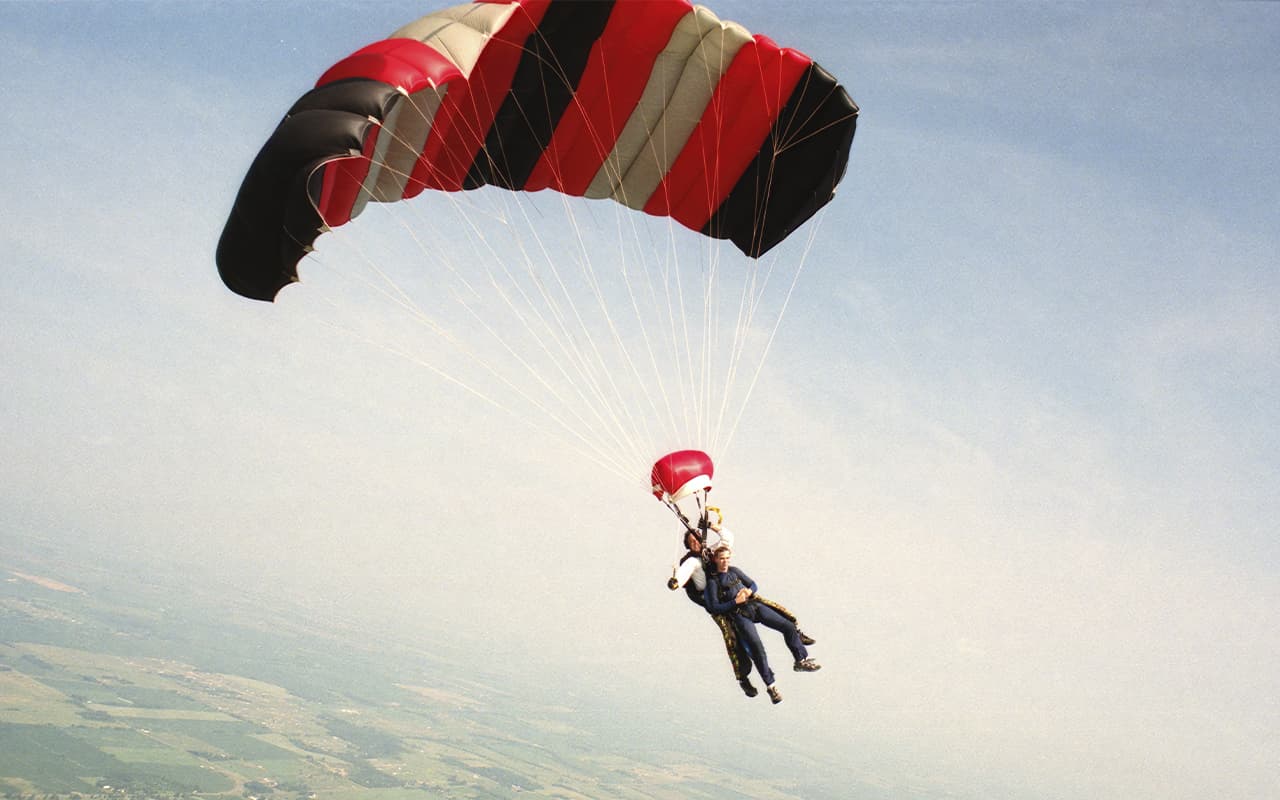The first thing beginners face is the fear of heights. In order to feel confident, it is necessary not only to master all the necessary theoretical knowledge, but also to automatize all the movements (when and which ring to pull, how to turn the parachute 180 degrees…). It is for the sake of your own safety that you should listen to the instructor very carefully and be sure to ask questions that appear.
It is important to understand that any parachute system consists of two parachutes (one of them will open in any case), as well as a special safety device. This does not mean that you can do whatever you want in the air during free fall or parachute descent. As practice shows, the majority of accidents during the jump, in the air and at landing are the fault of skydivers themselves. Instructors must necessarily explain to students what to do in case of side wind, how to behave if the landing place is missed, tell about the advantages of the one who descends lower …
In order not to panic, you can pre-scroll in your mind the upcoming jump, clearly imagine how it will be, and if there is such an opportunity, it is worth watching a parachute video, it will not be superfluous to talk to experienced people who have made more than one jump.
Other safety rules
Another important safety rule is to unconditionally follow all the instructions of the person releasing from the airplane. If this is not done, not only the one who disobeyed, but also other people can suffer during the jump. At the airfield it is obligatory to follow the elementary rules that will be announced by instructors during the preliminary training. If it is assumed that it will be necessary to spend a lot of time on the airfield, you should take with you a supply of water and food.
As for clothes and shoes, no one will let a girl in heels, of course, in the airplane, also you can not put on shorts and T-shirts, as clothes must necessarily be with sleeves and pants (the best is a jumpsuit made of dense fabric). In addition, in summer you should not forget to wear a light headgear to avoid getting sunstroke, and in winter you should remember about a warm hat and gloves. Each person fights fear differently, but when the instructor notices that someone is under the influence of alcohol or drugs, this person will not be able to board the plane and will be expelled from the parachute school.
Medical examination is another important point. Under no circumstances should a beginner deceive a doctor about the state of his health, even if he really wants to jump. There are a number of contraindications that are necessarily taken into account before allowing a person to equip and airplane: epilepsy, diabetes, severe bone injuries, problems with the cardiovascular system or musculoskeletal system, weight restrictions… It is not recommended to jump even with a runny nose, as eardrums and sinuses can be damaged.
If a person wished to go diving a day after jumping with a parachute, there are no contraindications in this case, but getting on the plane after diving to a depth of more than 10 meters is strongly discouraged. It’s all about nitrogen bubbles, which are in the blood of the scuba diver and are collected in places where the vessels bend, which can lead to their rupture. In any case, you need to sleep well before jumping, so that the brain worked at 100%, and the body reacted lightning fast. If a person is under the influence of medications, you should know that at altitude, their effect increases several times.
When a person who wants to learn to jump with a parachute is not psychologically ready for a jump according to experts, additional classes are organized specially for him, provided in most parachute clubs. After successfully completing them, he is allowed to jump.
